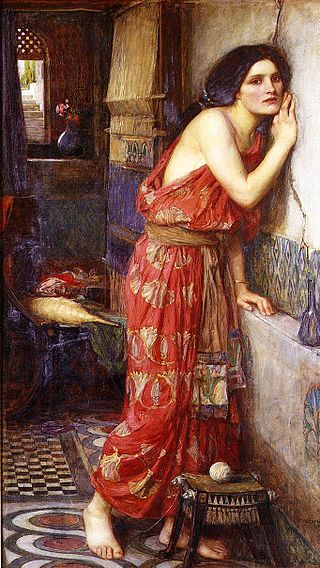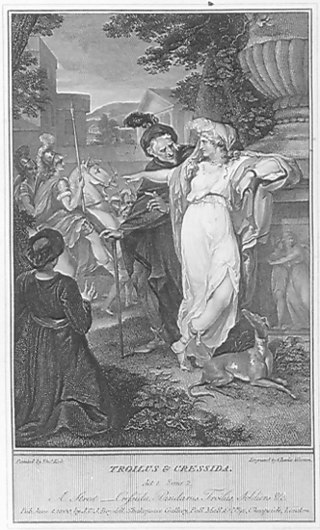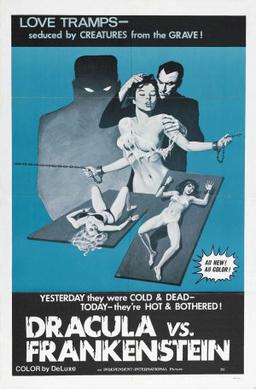
This article contains summaries and commentaries of the 100 stories within Giovanni Boccaccio's The Decameron.

Hecuba was a queen in Greek mythology, the wife of King Priam of Troy during the Trojan War.

Pyramus and Thisbe are a pair of legendary, ill-fated lovers from Babylon whose story forms part of Ovid's Metamorphoses. The story has been retold by many authors.

Pandarus or Pandar is a Trojan aristocrat who appears in stories about the Trojan War.

Cressida is a character who appears in many Medieval and Renaissance retellings of the story of the Trojan War. She is a Trojan woman, the daughter of Chryses, a Trojan priest. She falls in love with Troilus, the youngest son of King Priam, and pledges everlasting love, but when she is sent to the Greeks as part of a hostage exchange, she forms a liaison with the Greek warrior Diomedes. In later culture she becomes an archetype of a faithless lover.

Eros is a concept in ancient Greek philosophy referring to sensual or passionate love, from which the term erotic is derived. Eros has also been used in philosophy and psychology in a much wider sense, almost as an equivalent to "life energy". The Protestant philosopher C. S. Lewis posits it as one of the four ancient Greek words for love in Christianity, alongside storge, philia, and agape.

Troilus and Criseyde is an epic poem by Geoffrey Chaucer which re-tells in Middle English the tragic story of the lovers Troilus and Criseyde set against a backdrop of war during the siege of Troy. It was written in rime royale and probably completed during the mid-1380s. Many Chaucer scholars regard it as the poet's finest work. As a finished long poem, it is more self-contained than the better known but ultimately unfinished The Canterbury Tales. This poem is often considered the source of the phrase: "all good things must come to an end" (3.615).

The Adventures of Leucippe and Clitophon, written by Achilles Tatius in eight books, is the second-longest of the five surviving Ancient Greek romances, and the only one to exhibit genuine humour.

Troilus is a legendary character associated with the story of the Trojan War. The first surviving reference to him is in Homer's Iliad, composed in the late 8th century BCE.
Ripheus was a Trojan hero and the name of a figure from the Aeneid of Virgil. A comrade of Aeneas, he was a Trojan who was killed defending his city against the Greeks. "Ripheus also fell," Virgil writes, "uniquely the most just of all the Trojans, the most faithful preserver of equity; but the gods decided otherwise". Ripheus's righteousness was not rewarded by the gods.

Daisy (Korean: 데이지) is a 2006 South Korean-Hong Kong action thriller film directed by Andrew Lau. A South Korean-Hong Kong co-production, Daisy is an urban action romantic involving young painter Hye-young, Interpol detective Jeong Woo, and professional hitman Park Yi.

"Il Filostrato" is a poem by the Italian writer Giovanni Boccaccio, and the inspiration for Geoffrey Chaucer's Troilus and Criseyde and, through Chaucer, the Shakespeare play Troilus and Cressida. It is itself loosely based on Le Roman de Troie, by 12th-century poet Benoît de Sainte-Maure.

Dracula vs. Frankenstein, released in the UK as Blood of Frankenstein, is a 1971 American science fiction horror film directed and co-produced by Al Adamson. The film stars J. Carrol Naish as Dr. Durea, a descendant of Dr. Frankenstein who is working on a blood serum for his assistant Groton. The serum soon becomes sought after by Count Dracula, who hopes that it will grant him the ability to be exposed to sunlight without harm. Other members of the film's cast include Anthony Eisley, Regina Carrol, and Angelo Rossitto.

Le Roman de Troie by Benoît de Sainte-Maure, probably written between 1155 and 1160, is a 30,000-line epic poem, a medieval retelling of the theme of the Trojan War. It inspired a body of literature in the genre called the roman antique, loosely assembled by the poet Jean Bodel as the Matter of Rome. The Trojan subject itself, for which de Sainte-Maure provided an impetus, is referred to as the Matter of Troy.
Dracula is a Czech musical created by Karel Svoboda, Zdeněk Borovec and Richard Hes. Its world premiere was in Prague on 13 October 1995 at the Prague Congress Centre, with Daniel Hůlka in the title role. It was immediately called the Czech musical of the century. The musical is very loosely based on Bram Stoker's 1897 novel Dracula.

Nocturna is a 1979 American gothic comedy-horror film conceived by star Nai Bonet and written and directed by Harry Hurwitz, who was credited as "Harry Tampa". It premiered in France at the Paris Festival of Fantastic Films on March 1, 1979, to coincide with its U.S. release. The film is copyrighted 1978 in the opening and ending credits, as it was filmed in October and November 1978.

The Return of Dracula is a 1958 American horror film directed by Paul Landres, and starring Francis Lederer, Norma Eberhardt, and Ray Stricklyn. It follows Dracula, who murders an artist aboard a train in Central Europe, and proceeds to impersonate the man, traveling to meet with his extended family in a small California town. The film is primarily in black and white, aside from one brief color sequence.

Sturm der Liebe is a German television soap opera created by Bea Schmidt for Das Erste. It premiered on 26 September 2005. It airs 50-minute episodes on weekdays at 15:10.
"Quite a Common Fairy" is the third episode of the third season of the American fantasy drama series Once Upon a Time, and the show's 47th episode overall.

Troilus and Cressida is a play by William Shakespeare, probably written in 1602.



















